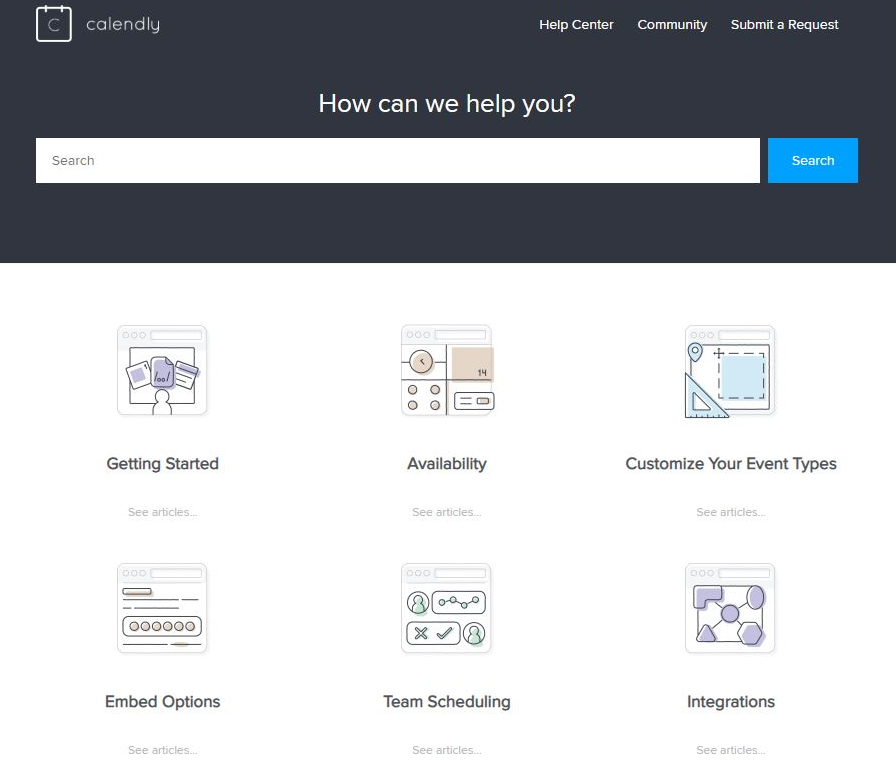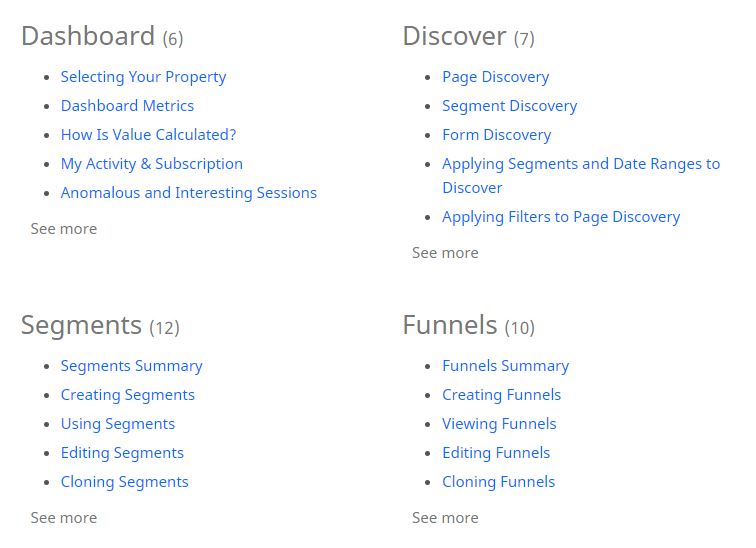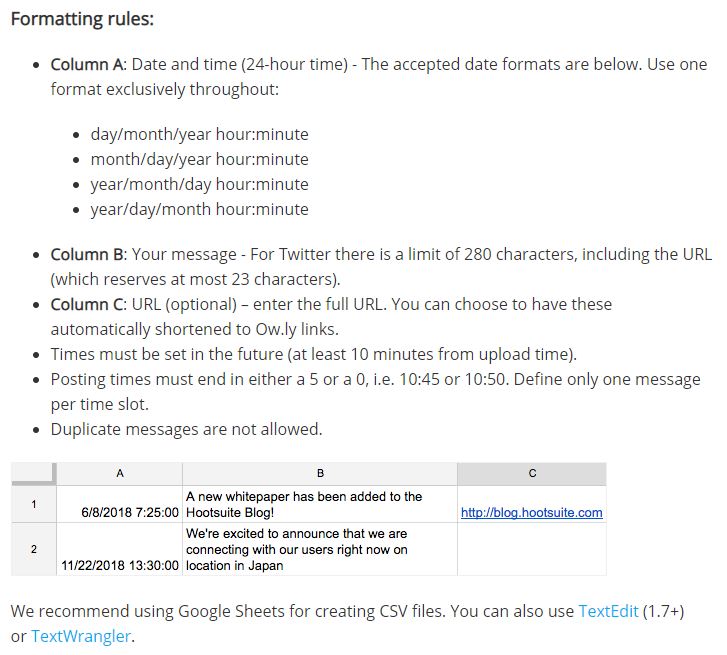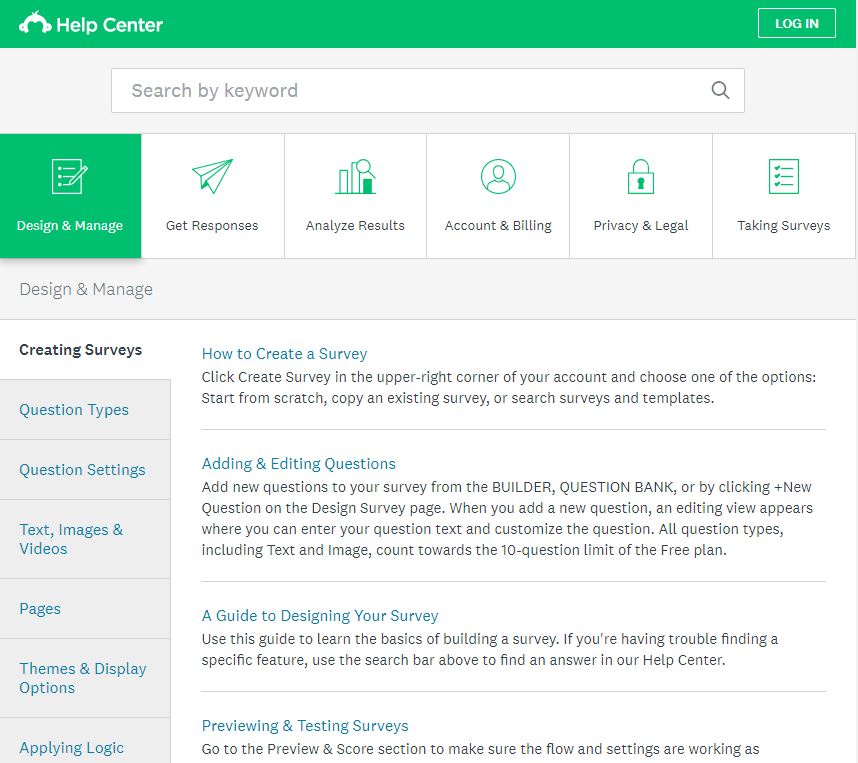This complete guide will cover everything you need to know about writing Knowledge Base Articles for business, from setting the foundation of your knowledge base to updating and maintaining it.
20 min read

In today’s competitive environment, it’s not enough to offer a good product. For a business to be successful, it needs to build a loyal pool of customers. To keep customers happy (and coming back for more) a business needs to have top-notch customer support. Not just for when things go wrong, but also to help customers make the most of a product or service.
Customer support is really where you can separate your business from competitors. Plus, it has a huge impact on your bottom-line with 64% of people saying that they prioritise customer service over price when dealing with a company. Offering great support also retains more customers. Businesses that increased customer retention by just 5% saw profits rise by a whopping 95%. But the stakes for customer support are getting higher because of increasing expectations. 67% of Millennials think that their expectations of what constitutes great service have increased in the past year.
That’s where knowledge base articles come in as a (relatively) quick way to vastly improve your customer support – and they’re even more important if you have a complex product.
Simply put, a knowledge base article features a set of information about a product as a user guide or to solve common problems. Although technically an ‘article’ it doesn’t always have to be written. Some companies use videos, images, infographics and animations to get their point across.
Creating an effective knowledge base article is tough. There’s a lot of ground to cover and many people don’t realise how involved it is. A good knowledge base article needs to keep things simple. It needs to speak to a range of different people from complete novices to techies and experts. It must talk about a lot of topics – anything that your users may need to know or any issues that they might encounter. Plus, it needs to be interesting and engaging.
So, it can be hard to know where to begin. To help you out, this piece offers a complete guide to creating knowledge base articles. From the bare bones of your strategy to measuring if it’s working and knowing when to give it a refresh.
First things first, a knowledge base is incredibly useful for your customer support team. With a knowledge base at their fingertips, your team can quickly resolve common customer issues. They can point people towards specific documents or videos as a solution, instead of asking endless questions and trawling through a list of different troubleshooting options.
Of course, customers might not even reach your support team. A knowledge base gives them the freedom to search for answers to their questions without ever darkening your team’s door. This is preferable for some customers. 70% of customers prefer to use a company website to find a solution instead of picking up the phone or writing an email. Millennials, in particular, are well documented as phone-phobics, so if they make up a lot of your customer base then providing online support options are a must.
Having knowledge base articles available to your customers creates a kind of triage system for your customer support. Only the most complex questions and issues will reach your support team (the ones your knowledge base cannot resolve).
As an added bonus, having knowledge base articles can improve your website traffic. 45% of companies that offered some kind of self-service support option experienced an increase in site traffic and fewer phone calls to their support team.
To clear up a potential myth, don’t believe that you have to be a large business to reap the benefits of knowledge base articles. They work for every business. Every company needs to offer great customer service, from the smallest sole trader to the largest conglomerate. In fact, having a knowledge base can benefit small businesses more than larger ones. They’ve often got little-to-no dedicated customer support and limited resources, so a knowledge base relieves some of the pressure.
Before you ever put pen to paper there are a few steps to do that will ensure your knowledge base articles hit the right note. These will lay the foundations of your knowledge base, so it’s vital that you take your time and don’t miss anything out.
Your customer support needs to be tailored to (you guessed it!) your customers. Knowing your audience will inform every aspect of your knowledge base. They might not even like to read, for instance.
It will also tell you how simple your knowledge base needs to be, although a good rule of thumb is to keep it as accessible as possible. Most people cannot understand highly technical jargon unless they are industry insiders.
Without knowing your audience’s technical understanding or preferred learning style, your base won’t be able to fully cater to their needs.
In theory, you should already have a good grasp of your customer behaviour as part of your marketing strategy. But if not, there’s no harm in consulting a few customers when developing your knowledge base. Releasing a ‘beta’ version to a select few can help you refine your content, the format and identify any areas for improvement.
Any good knowledge base article has great content. As previously mentioned, this doesn’t necessarily mean a text-only article. It can include imagery and video too. But good writing underpins all of this because you’ll have to come up with the script for a video or the words for an infographic. Our article on how to write amazing knowledge base articles covers this in more detail.
Without the right content that covers every potential question and problem, your knowledge base will fail. It needs to simplify any technical concepts so that anyone can understand what you’re talking about. Jargon, acronyms (that aren’t spelt out) and buzzwords are a big no-no. You also have to make it engaging. If people don’t enjoy reading or watching it then they’ll switch off from your content. Getting ideas for your knowledge base can be tricky at the start, so we’ll offer some inspiration in another guide.
Problems that appear time and time again are perfect to include in a knowledge base article. If one customer encounters an issue, it’s highly likely that others will too. So save your team (and your customers) time and effort by including a troubleshooting section.
To uncover recurring and common problems, consult your historical customer support enquiries. Alternatively, you can sit down with your team and ask them about questions that crop up over and over. This has an added perk for your product development – any problems that can be easily resolved will improve later iterations of your products.
The location of your knowledge base shouldn’t be an afterthought. It needs to be in a place that’s often used by your customers. That’s why many companies put their knowledge bases in a dedicated customer support hub or on their website.
It also needs to be responsive, meaning your knowledge base can be accessed from any device, including mobiles and tablets. If you’re using Document360 to create your knowledge base, then this won’t be a problem as this happens automatically for all content.
Calendly is a relatively simple online tool to use (it only involves a few clicks!) so it hosts its knowledge base on its website. Customers can access it from the footer of the homepage and it then reveals a list of different topics. These expand further into the articles themselves and further options.

Another key decision that you must make about your knowledge base is how to format it. Some companies, such as Calendly, use purely visual formats like videos. Others will use only text-based. As a start, there are tons of article templates that you can use freely available online.
What you decide on will depend on your customers. Consider what channels they actively engage with already – do they prefer to read your content or are your videos particularly popular?
A mix of different formats can work well. Wunderlist uses a mix of words and screenshots to help guide users through its tool. You could also do a summary video and go into more detail in your text later on. Having some text in your knowledge base helps with SEO too. Our article on how to SEO your knowledge base articles goes into more detail on this.
How you structure your knowledge base and its articles will either help your customers sift through it all – or confuse and frustrate them. Some of your customers will likely be turning to your knowledge base because they have a problem, that means they’ll already be stressed and annoyed. So, you want to make it as simple and intuitive as possible to navigate through your knowledge base.
It goes without saying that it needs to be well planned and logical to follow. For your structure, there are a few different options:
Decibel Insight shows a good example of a knowledge base structured in categories.

Whatever structure you end up using, remember that your customers should learn everything they need to know by going through it from start to finish.
Numbered steps can be helpful when guiding users through a particular set-up or problem-solving task. LastPass does this well for users who cannot gain access to their account. It also features an extensive FAQ section of commonly asked questions and an option to escalate the case.
After laying the foundations of your knowledge base, it’s time to start creating it. This may take some time, but you can always prioritise or rank articles by how important you think they are and how much your customers are likely to benefit from them. A knowledge base is a work in progress, so you should always be adding content to it.
Speaking of which, it’s a good idea to get yourself some knowledge base software that will grow as your business grows. You don’t want to put lots of effort into a knowledge base that fails to scale with your organisation!
You’re likely to need to do some technical writing at some point in your knowledge base creation. Technical writing is a bit of a unique skill, in that it takes complicated and jargon-filled information and simplifies it for everyone to understand. It’s so involved, that we’ll go into more detail about popular tools for technical writing.
Titles and headings will help your customers find the answers that they are looking for. Don’t get too creative with them, instead focus on creating instantly understandable, simple titles so customers can easily click on the right one. Action words work well in knowledge base titles, that’s words like ‘How to’ and ‘Using’.
Having a menu that is easily accessible (scrolling with them on the side of the web page, or static at the top) can help customers even more.
Subheadings within an article will help break up long sections of text or lots of information, plus it helps customers who might be skim-reading. You could also include a bulleted brief at the top of each article for people who are only looking for a summary or quick solution.
SEO should also be considered in your titles. Consider what phrases people will be using to search online. Usually, they revert to a caveman-type speak such as “reset master password LastPass”.
Knowledge base articles can be dry and long-winded if they aren’t broken up effectively. One good way to do this is to use a mix of imagery, from screenshots of your product to infographics.
Some customers will be visual learners, so imagery will really help them understand your product. Infographics, graphs, tables and charts can also summarise your articles for customers with limited time. They aren’t too difficult to create either, online tools like Canva mean you don’t need a graphic designer to knock up a quick visual, and Snagit is a great option for image and video screenshots.
Incidentally, many customers won’t have much time to sift through reams of information. So you should break your article up into ‘skimmable’ chunks. One good rule to follow when evaluating the length of your article is: if you cannot read through an article yourself in an entire sitting, then it’s probably too long.
Bullet points can help break up text and summarise information, or if your article is really long you might want to consider breaking it down into a series of smaller posts. Again, imagery is your best friend in this scenario – infographics can highlight key points and videos are great for quick run-throughs.
Google Analytics’ knowledge base uses mini content sections to help navigation through its articles. These are located at the start of each article, allowing users to jump straight to the answers that they need.

The tone and type of language that you use need to reflect your brand and any other content your company has already published. It needs to be engaging, but also informative, not too technical and it shouldn’t be confusing. People need to get its meaning immediately, otherwise, they’ll be frustrated.
Make sure that your language is straightforward and talks like your customers talk. Nobody really chats in jargon or acronyms, so keep these out of your articles. Avoid being salesy too, at this point, you’re trying to onboard someone or solve a problem, so it really isn’t the time or place for selling.
Again, a really involved topic that we’ll get into more in another guide. For now, you need to be mindful of some SEO best practices to help your knowledge base rank in search results. Stick to commonly used search terms for your titles and focus on one or two keywords in each article. These keywords need to appear in any text, as well as image and video descriptions, headings and subheadings. Plus, you can include links to other articles in your knowledge base if they are relevant, as these can help boost your SEO further.
Details matter in a knowledge base article. If there’s something important that your customers need to know for that specific solution, then make sure you include it; for example, if a certain function is only available on a higher tier plan or if information needs to be in a certain format. If it’s a bit tough to write out, then use a video or screenshot that points directly to what you’re talking about.
Take a look at Hootsuite, which does this well when it highlights that a date needs to be in a specific format when scheduling content. This saves a lot of time, effort and frustration in the long run because attention is drawn to the program quirk early on!

You don’t necessarily have to do all the work when creating a knowledge base. This is especially relevant if you have a large user group and an extensive product range. Instead of one person spending all their time creating a knowledge base, share the load with different people within your organisation. Coworkers in other departments might also be best-placed to create a guide on a certain subject.
Just make sure that everyone is communicating regularly and that they stick to the same style and tone. This can be made a lot easier by using Document360, which offers collaborative tools as part of its knowledge base software.
Along with menus, headings and other navigation tools, you should include a search function to help your customers locate the articles that they need. Remember, your customers are likely time-poor so anything that can help them find answers quickly will vastly improve their user experience.
But, of course, make sure your search function actually works well! Results need to be relevant to the question or phrase that a customer has typed in. It’s a good idea to always include contact information for your customer support team somewhere obvious in the results as well – just in case your knowledge base can’t answer your customer’s enquiry right away.
Document360 offers a fast search function as part of its knowledge base software. This goes a step further than a simple search, predicting what your customers are likely looking for as they’re typing out their enquiry.
We like Survey Monkey’s style when it comes to the search on its knowledge base. The results are simple and clear, plus there’s a highlighted option to contact the team if the search results don’t provide the right answers.

Your work isn’t done after you’ve created your knowledge base articles. There are a few other steps that you need to do regularly to ensure your knowledge base remains useful and up-to-date.
Gaining feedback on the usefulness of your knowledge base will help refine it and make it even more useful to your customers. Document360 offers a quick feedback option for any customers using one of its knowledge bases. This quickly tells a company if their knowledge base is ticking all the right boxes or if there’s room for improvement.
It’s also worth asking your customer support team if the knowledge base has helped with their daily work. Have regular meetings with your team to review your knowledge base and see where content might be missing or need a refresh.
Freshdesk has a short survey included at the end of all its articles. After reading the guide, users are asked if they found it helpful and – most importantly – if they select ‘no’ then whoever wrote the article is sent an alert. This instant action then tells the author that they need to return to the article and look for ways to improve it.

The data behind your knowledge base can be a useful form of feedback as well – telling you whether people are using the articles and what content is most popular.
Not only will this tell you if your knowledge base is a hit, but it might also highlight any issues that many users are experiencing. This gives a valuable opportunity to improve your products and remove any recurring problems or pain points.
As previously mentioned, your knowledge base is a work-in-progress. Your work is never completely done on one! It’s an embodiment of your business, your customer support and products. As such, you need to review it regularly (set yourself a calendar reminder at least every quarter or bi-annually) to check that it is helping your customers and reflects the current state of your business.
New products will have to be added to the knowledge base, new languages might have to be supported if your business expands globally and articles that aren’t working well will have to be redone.
The SEO of your knowledge base articles should be double-checked to ensure there are no broken links that might be negatively impacting your ranking. If you’re feeling thorough, you can also review current SEO best practice to see if your articles need a bit of tweaking to still rank well.
Starting your knowledge base can be time and resource intensive, but it will pay off in the long run. Once you’ve created it, you can continuously work on your knowledge base articles to improve and add to them. Plus, creating your knowledge base can be a lot easier if you use a dedicated software to do the technical groundwork.
Your knowledge base articles will be the backbone of your customer support. So don’t neglect it. Make sure you adapt your knowledge base to any product or business changes in your organisation, as well as refine it based on feedback.
In this day and age, every business needs a knowledge base. Good customer support is the very least that is expected of your company. Fail to meet your customers’ expectations and you’ll see them headed for the door. Provide a good knowledge base and stop them in their tracks.
Can’t find the answer here? Get in touch
A knowledge base article provides information about a product or service to help users solve common issues or understand how to use a product.
Knowledge base articles improve customer support by offering self-service options. They reduce the workload on support teams and enhance customer satisfaction by providing easy access to solutions.
Keep content clear, concise, and simple. Use headings, bullet points, and visuals for readability. Avoid jargon and use action-oriented titles.